| Home |
| Acknowledgments |
| Conventions |
| Glossary |
| Maps |
| References |
| Links |
| Articles |
| Thumbnails |
| Species
list |
| Family |
| Next
species |
Additional Photos
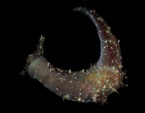
underside

side

less white

more white
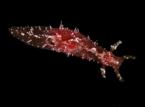
few papillae
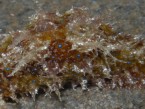
ocelli detail
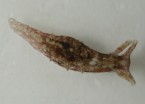
young, 5 mm
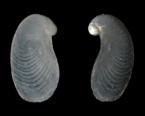
shell
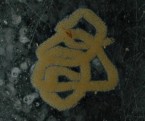
egg mass
_______________
GALLERY

Phycophila euchlora Adams, 1861
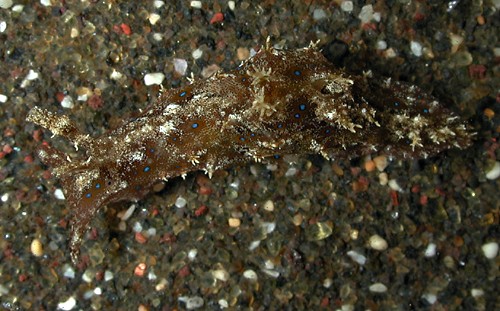
| Maximum size: 22 mm. Identification: This is a small, translucent-cream sea hare frosted with white and brown flecks. It's decorated with prominent blue and gold ocelli at all sizes. Although superficially similar to Stylocheilus striatus, it can be distinguished from that species by its more prominent blue and gold ocelli, more elaborate villi and brown flecks that are random rather than arranged in lines. The ornateness of the villi and amount of white pigment are variable. Natural history: Phycophila euchlora is a moderately common species found in moderately protected to highly exposed rocky habitats from < 1 to 11 m (< 3 to 36 ft). It may also be found in Halimeda kanaloana beds. It feeds on cyanobacteria (blue-green algae). As in S. striatus, the blue and gold ocelli may represent aposematic coloration "advertising" the presence of toxins concentrated from its food. (Note 1) It lays a tangled, golden-brown egg string that hatches in six to seven days in the laboratory. Distribution: Big Island, Maui, Oahu, Kauai, Pearl & Hermes Reef and Midway: widely distributed in the Indo-Pacific Taxonomic notes: Bazzicalupo, et. al (2020) resurrected P. euchlora for this species. We previously listed it as "Stylocheilus(?) sp. #1" (based on a suggestion by Carlo Cunha). Photos of the species on some sites are mislabeled as juvenile Bursatella leachii. (Note 2) It was first recorded in Hawaii from Maliko Bay, Maui by PF in Aug., 1992. Photo: CP: 16 mm: Ulua Beach, Maui; April 2, 2005. Observations and comments: Note 1: This species, Stylocheilus straitus, other ocellate sea hares that aren't present in Hawaii and most of their various mimics such as Aegires exeches and Scyllae sp. #1 appear highly cryptic from a distance but have very similar blue and gold ocelli when viewed at close range. Perhaps, they're under simultaneous selective pressure from two groups of predators with very different visual systems (maybe, fish and crustaceans such as mantis shrimp?). Together, they seem to represent a large mimicry complex similar to the "black-and-yellow" terrestrial insects (associated with stinging bees and wasps) and including both batesian and mullerian components (maybe, with the sea hares representing the primary models?). As with its terrestrial analog, there are other species in the complex that combine the colors in a less precise manner (such as Stylocheilus longicauda, Dendrodoris krusensternii, Miamira sinuata, Odontoglaja sp. #1, Lobiger viridis and Oxynoe jordani). At least three Hawaiian crab species, the prosobranch Eratoena sandwichensis, several small fish and the urchin Astropyga radiata (another possible model) may also be involved. Elsewhere in the Indo-Pacific there are several additional species that appear to be part of the complex. Note 2: The largest of 99 animals from algae washes was only 22 mm in length and the few animals seen in the field weren't noticeably larger. Also, an 11 mm animal laid eggs while held. This contrasts with 150 to 200 mm for large Bursatella leachii. |
| Thumbnails |
Species
list |
Family | Next species | Top |